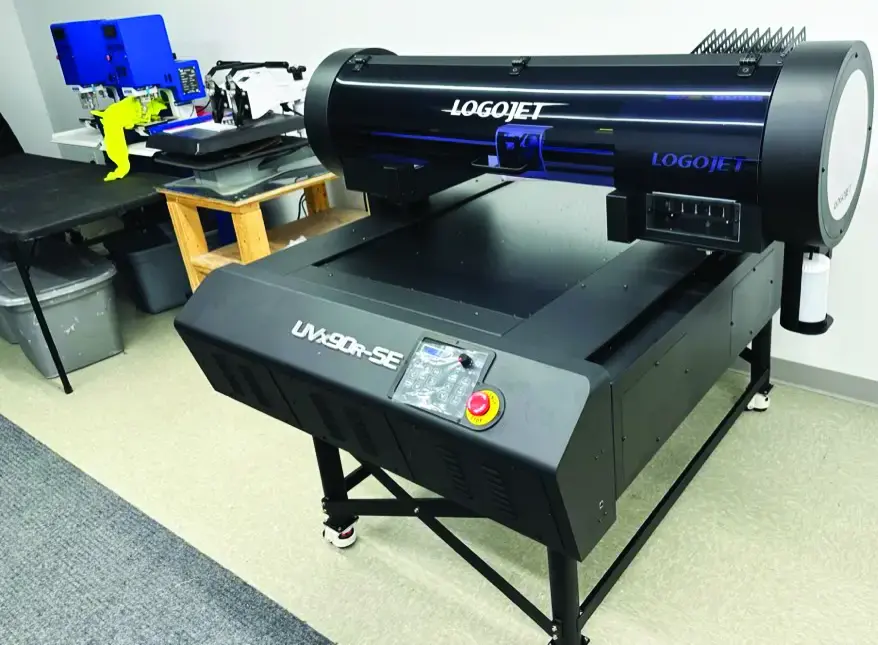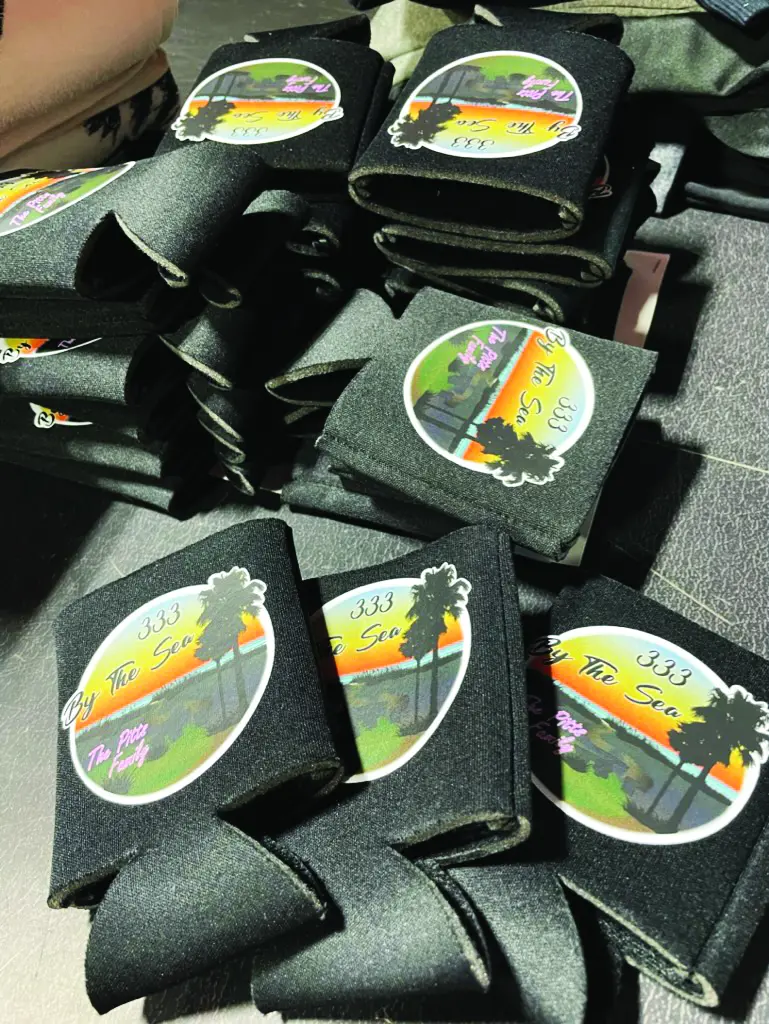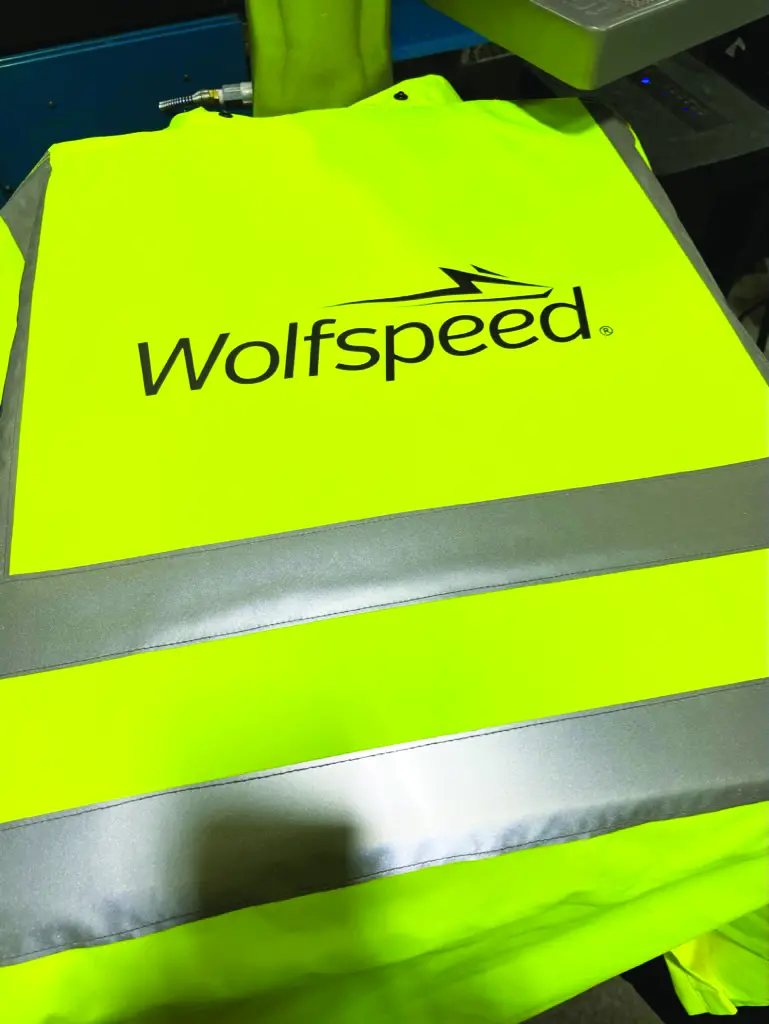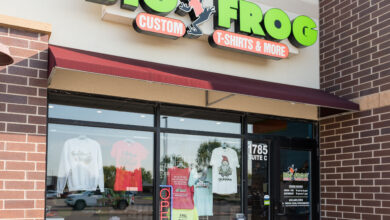
Over the past 20 years my wife, Amanda Potter, and I have been in business, we have not only watched technology evolve in our industry, but we have also watched the promotional companies we work with grow. However, we have simultaneously watched some of these companies fail at keeping up with a quality standard or meeting in-hand dates, which in return can cost us our customers. What have we been doing about it? We have been researching and slowly bringing the processes in-house to not only give our customers options but also to handle all of their needs.
Earlier this year we got our direct-to-film (DTF) process up and running, which gives our customers a full-color printing option for the price of a two-color screen-printed item. In just eight months, we have already produced $400,000 in production, and we did not start promoting the process until February of this year. The process has now outproduced screen printing. We are projecting that by the summer of 2024, we will need to look at ordering another 24H4 from Coldesi, since all of our customers are loving the look, feel, and turnaround time using the DTF process.
Over the past few months, while the DTF process was exploding for us, we had some promotional orders approved by customers for custom golf balls, baseballs, etc. Each order that was placed was not only a decent sized sale of $3,000 to $8,000, but they were also all rush orders and we sourced promotional companies for each job and paid each one upfront. Unfortunately, after they promised they could get the job done, we found out they didn’t have the capacity to do so. They called telling us after the fact that they could not complete the job in time. This happened several more times, and we are not a company that misses deadlines.
As this was happening, we were able to use our DTF process on some items like tote bags, umbrellas, can koozies, and so much more. As each promotional company failed, it forced me to start researching how these products are customized and look for the best manufacturer to work with. I reached out to a few of our blank stock suppliers, and they gave me a list of who to check out since the next process we needed to get into was UV printing. The nice part about this process is you can literally print thousands of items with it.
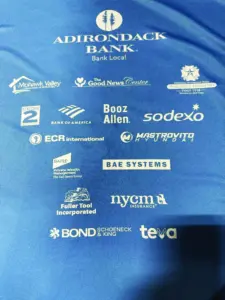
I spent close to a month working with LogoJET. I have had the pleasure of working with Merrie Matson from LogoJET as my sales representative. Matson has a wealth of knowledge and if there is something she does not know, she will get you the answer. From the first day I started working with her and their company on getting information on the machine, I knew this was the company we would want to work with long term. Every question mattered to them, and their response time was always quick.
After several phone calls and emails, we set up an online demo meeting to see how the UV printer operates. The software from the demo looked super easy to use and very similar to vinyl printer software. Additionally, the demo made it clear that setting up the machine to run different products was a smooth process. These are all things I was looking for in a vendor. I needed a process that not only could print thousands of different items but would be easy to teach our team to use.
The machine we decided to go with was their LogoJET UVx90R-SE, which has a product clearance of 6” for height and a printer bed print area of 24” X 36”. This machine is 25% faster than its previous model. We could have gone with another smaller model, but we have learned as a company that we are better off buying the larger machines and growing into them, rather than taking a chance at buying them and maxing them out in a few months.
Our company subcontracts out around $500,000 in promotional orders a year, so we knew that this one machine alone could help bring a minimum of 80% or more of that production back in-house — keeping our existing team busier. The machine’s cost is about $64,995, with approximately $3,000 more for backup parts, supplies, and extra trays to experiment with different products that you think you will be printing on using the machine. You should always buy extra parts like an emergency backup kit. In the case that something does happen, you are only down for a few hours and not a few days. We do this with all the machines we own.
To understand the return on investment here: shoot high and say at worst (with the model we picked) you spend around $70,000. Take the monthly machine payment and divide it into the number of days your company operates per month. In our case, this is a minimum of 22 days, which equals your daily cost of the machine. For our business, that amounts to approximately $1,150 divided by 22 days, which equals $52.28 per day for the machine loan. You can make that back just by printing one 2’ X 3’ yard sign per day. We always break down the yearly, monthly, and daily math, in addition to figuring out how much work it will take to make the monthly payment back.
Another product we sell a lot of is Polar Camel tumblers. The machine can handle close to 96 tumblers per hour depending on the size of your artwork. When calculating return on investment, we always lowball the number to be safe. Even if you figure you are only producing 72 pieces per hour at a minimum net profit of $4 per cup, this nets you $288 per hour, which means you only have to run the machine for four hours at this volume to make the monthly payment.
No matter the size of your company, if you are looking for a new process to expand the product options to your customers, I suggest looking into UV printing technology. The investment will help you keep more work in-house and allow you to continue to grow and meet the demands of your customers’ needs.
